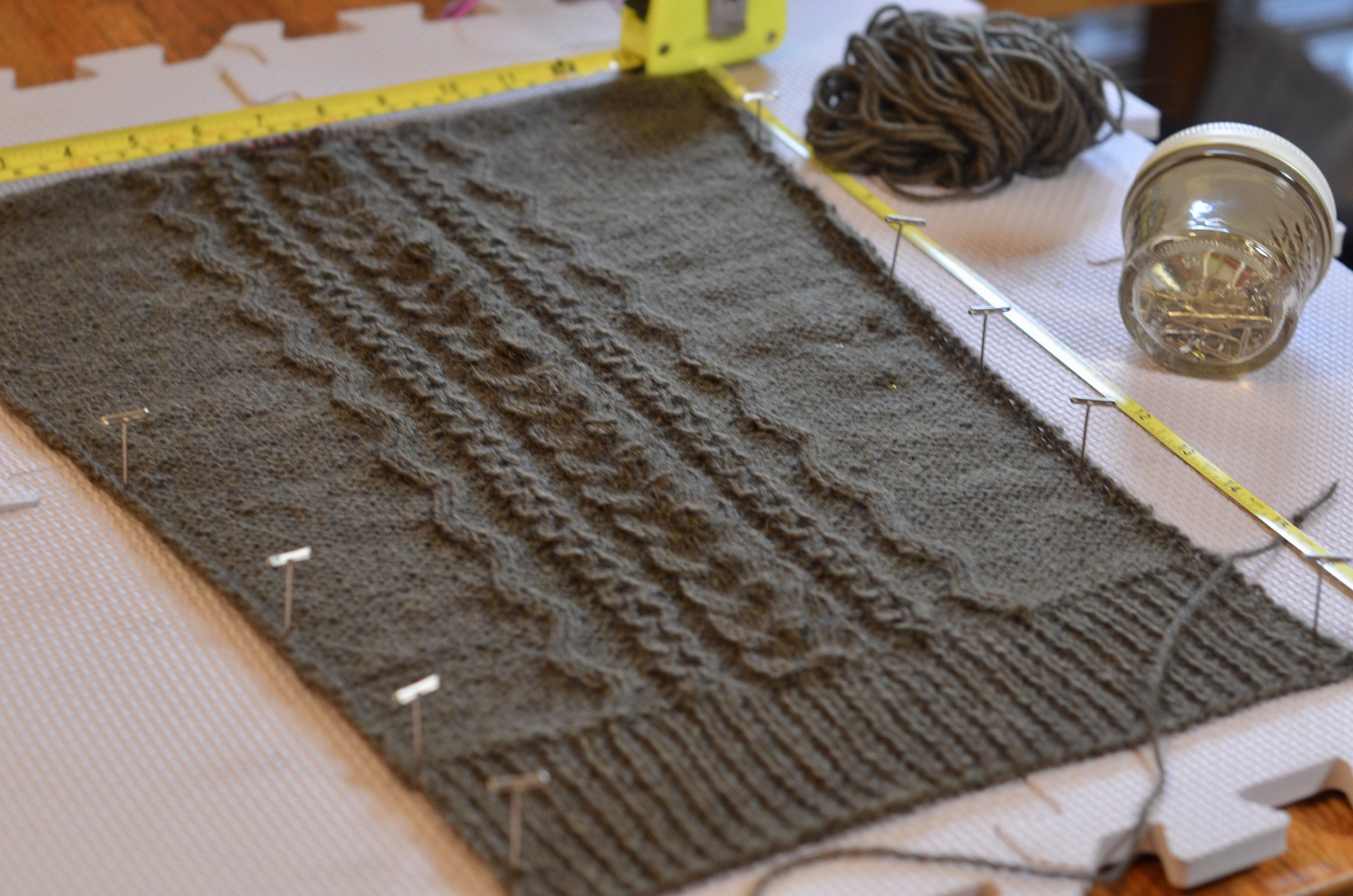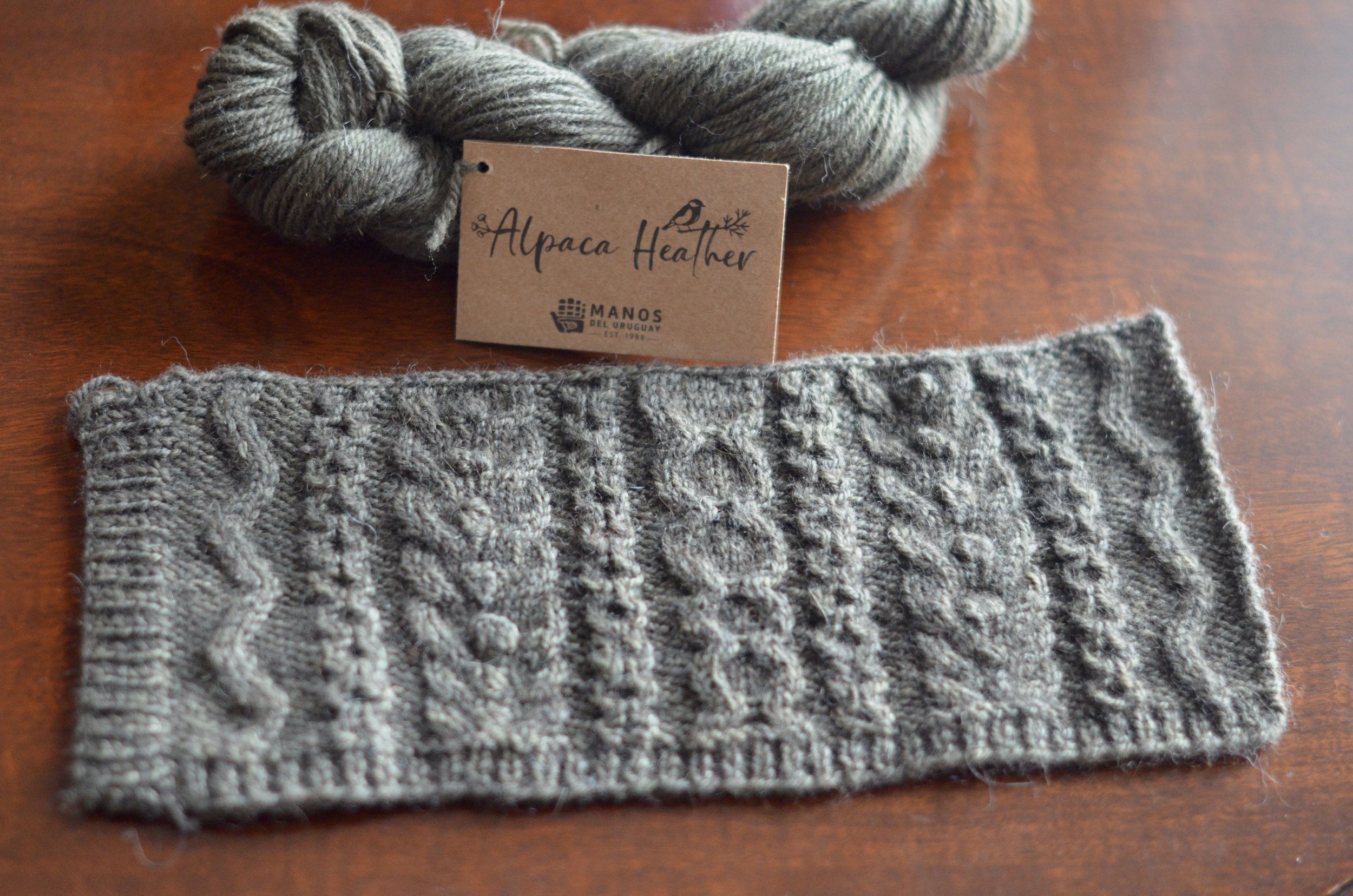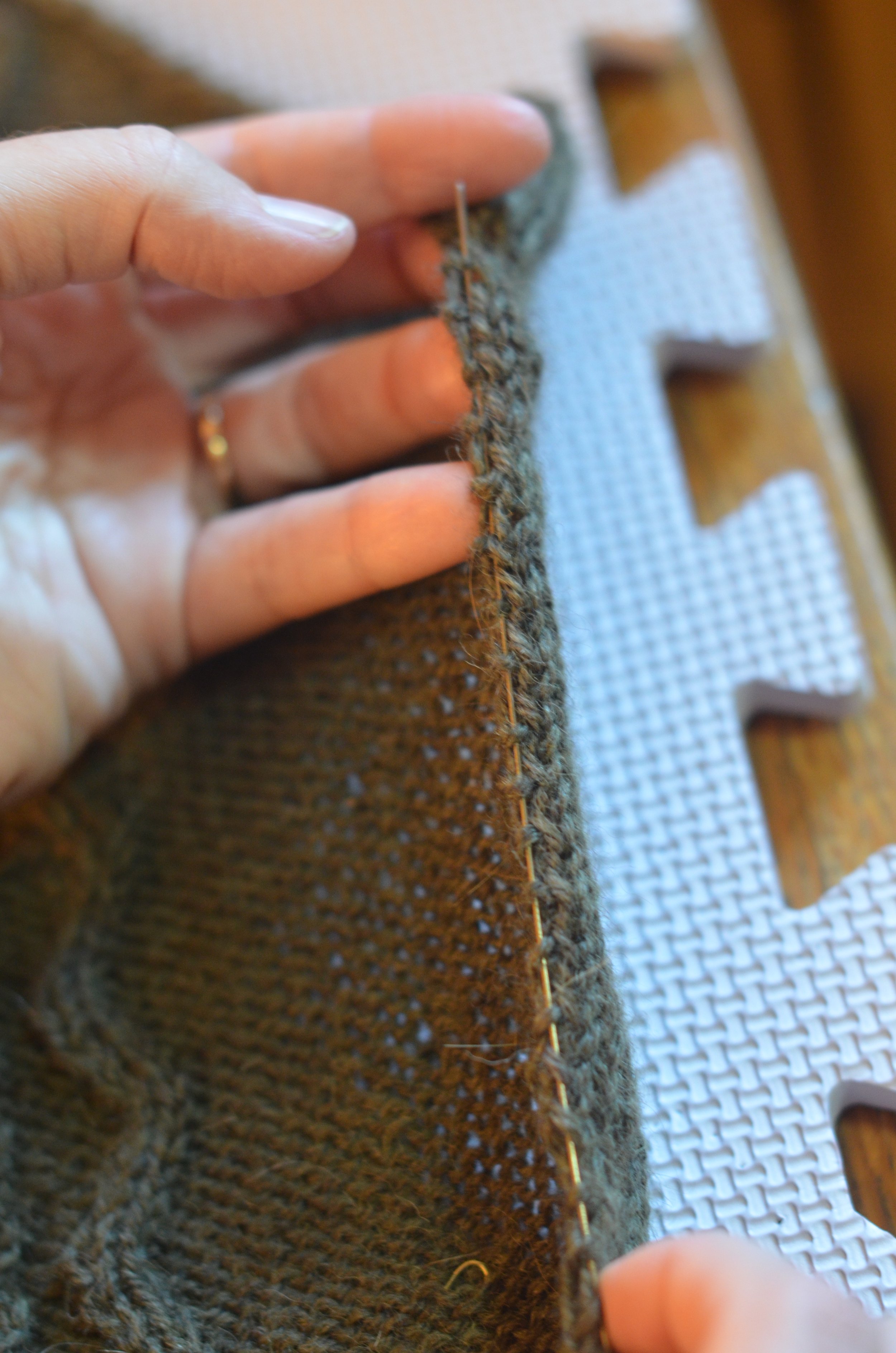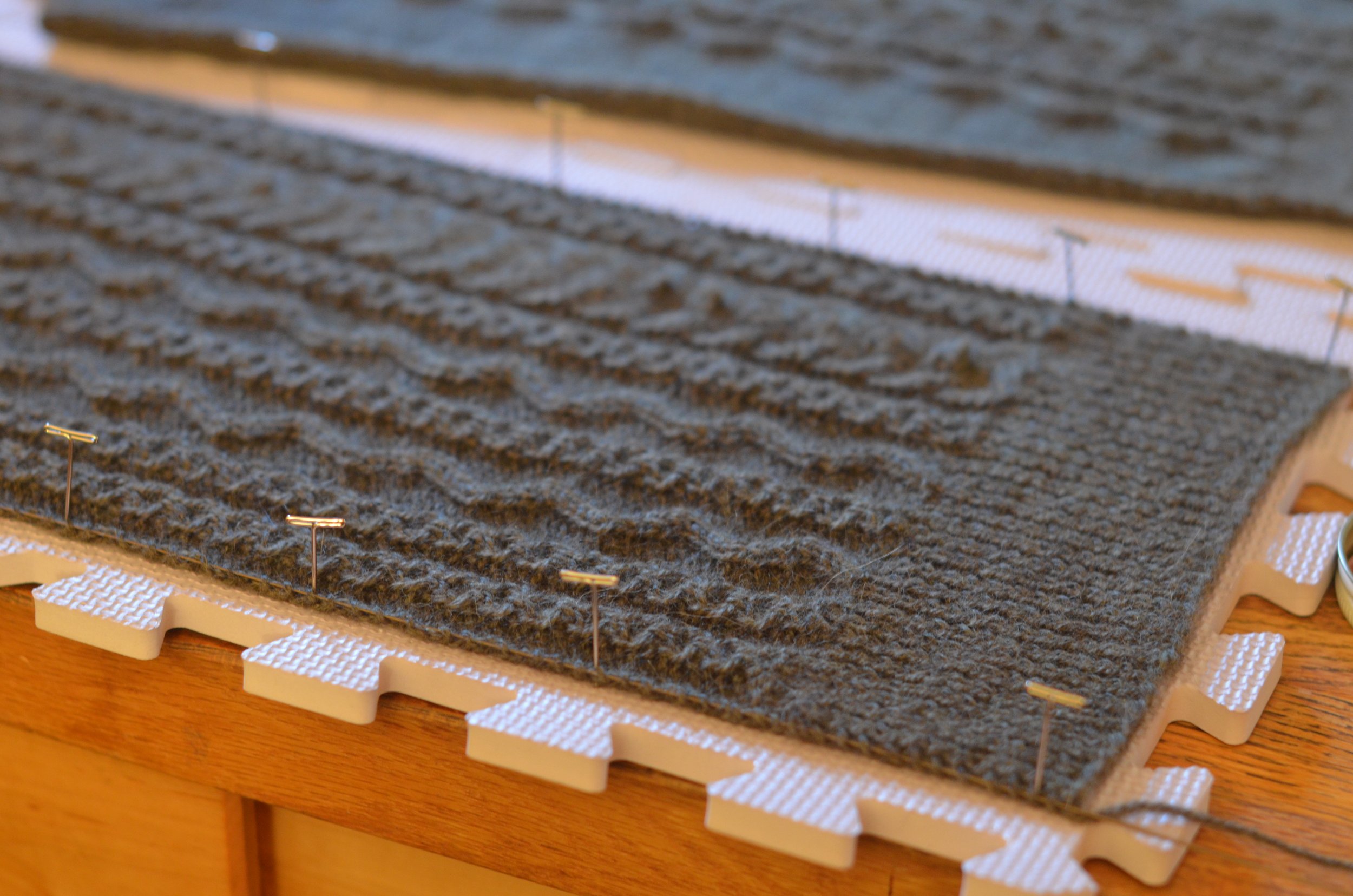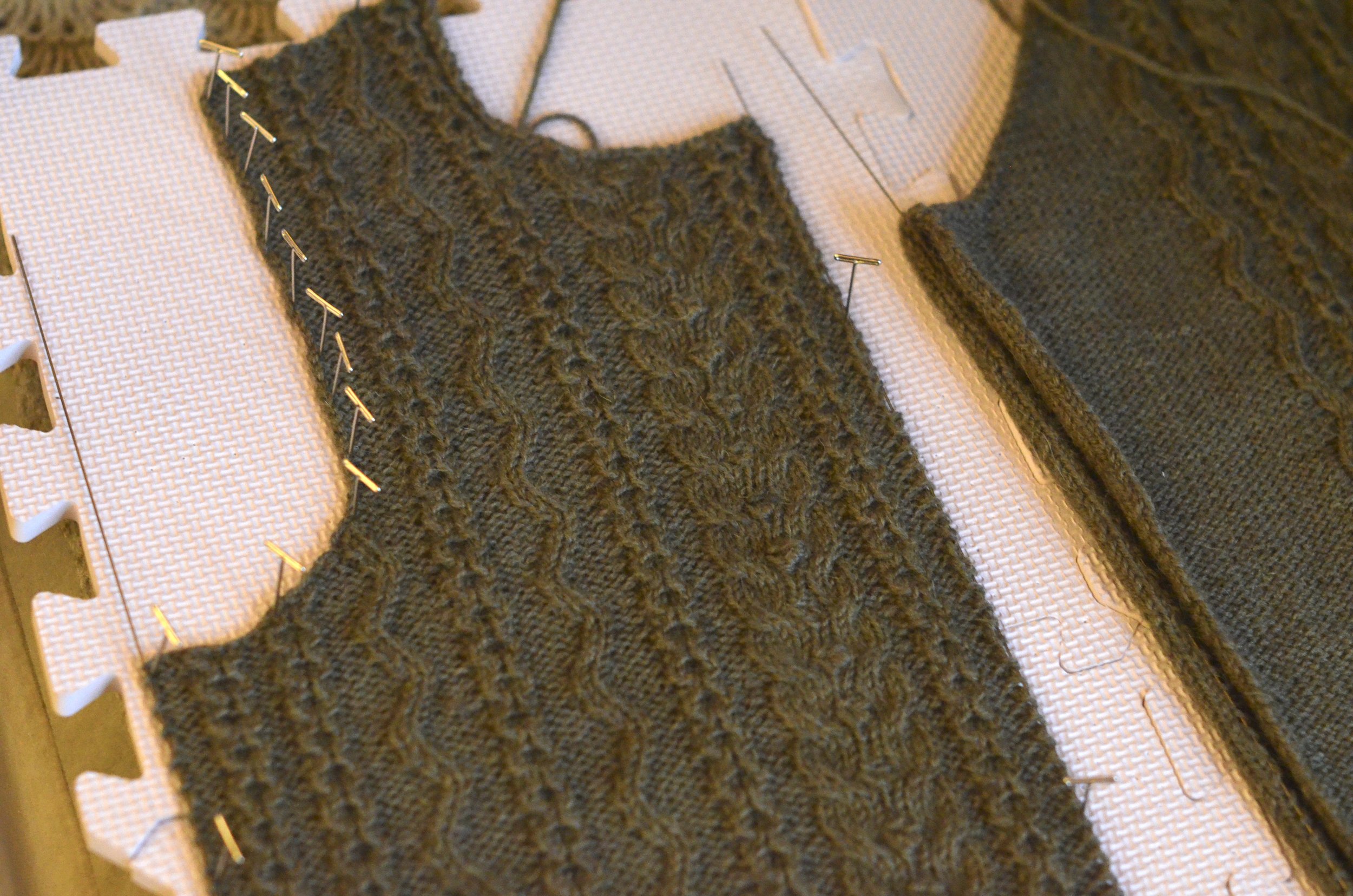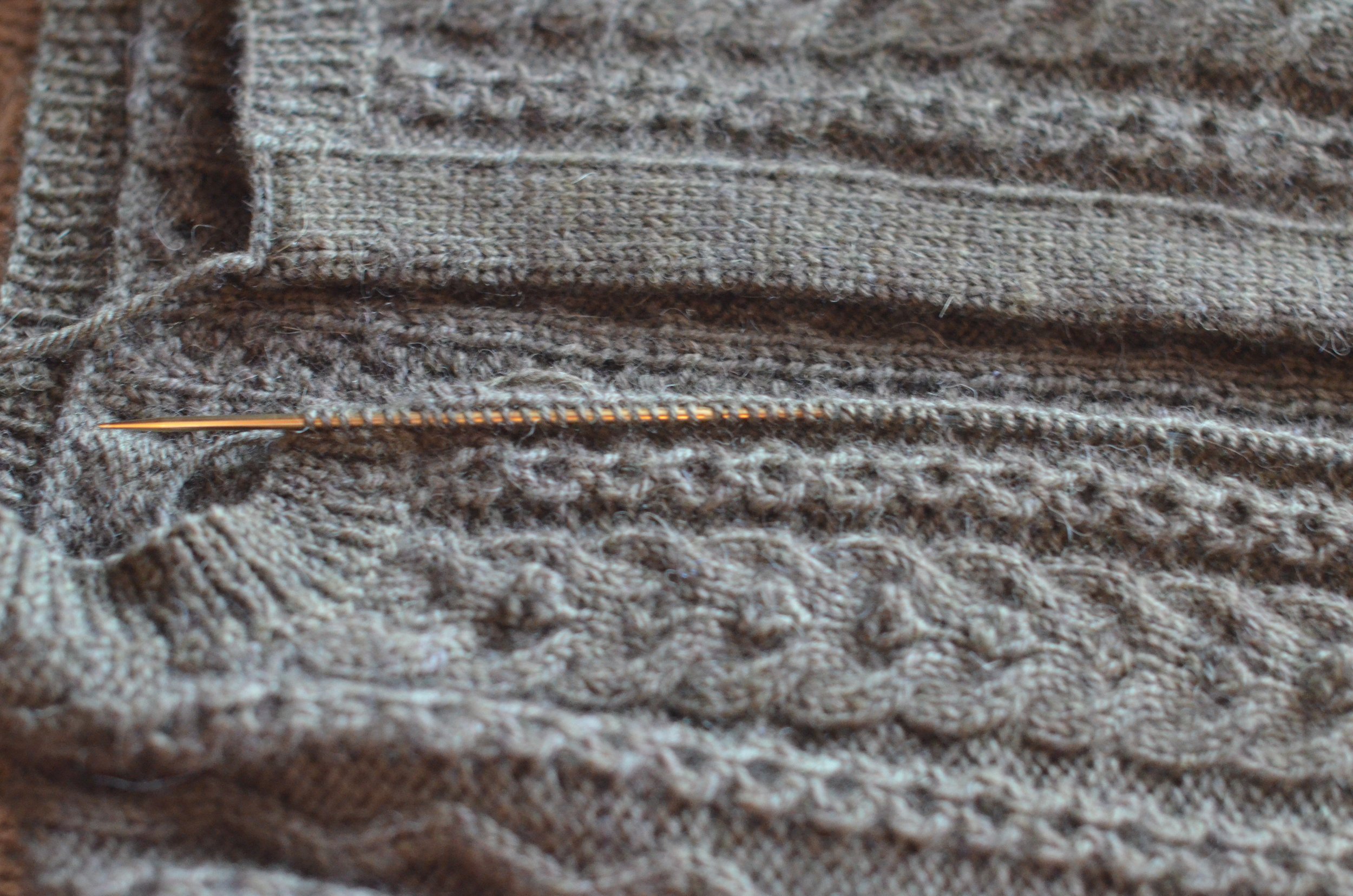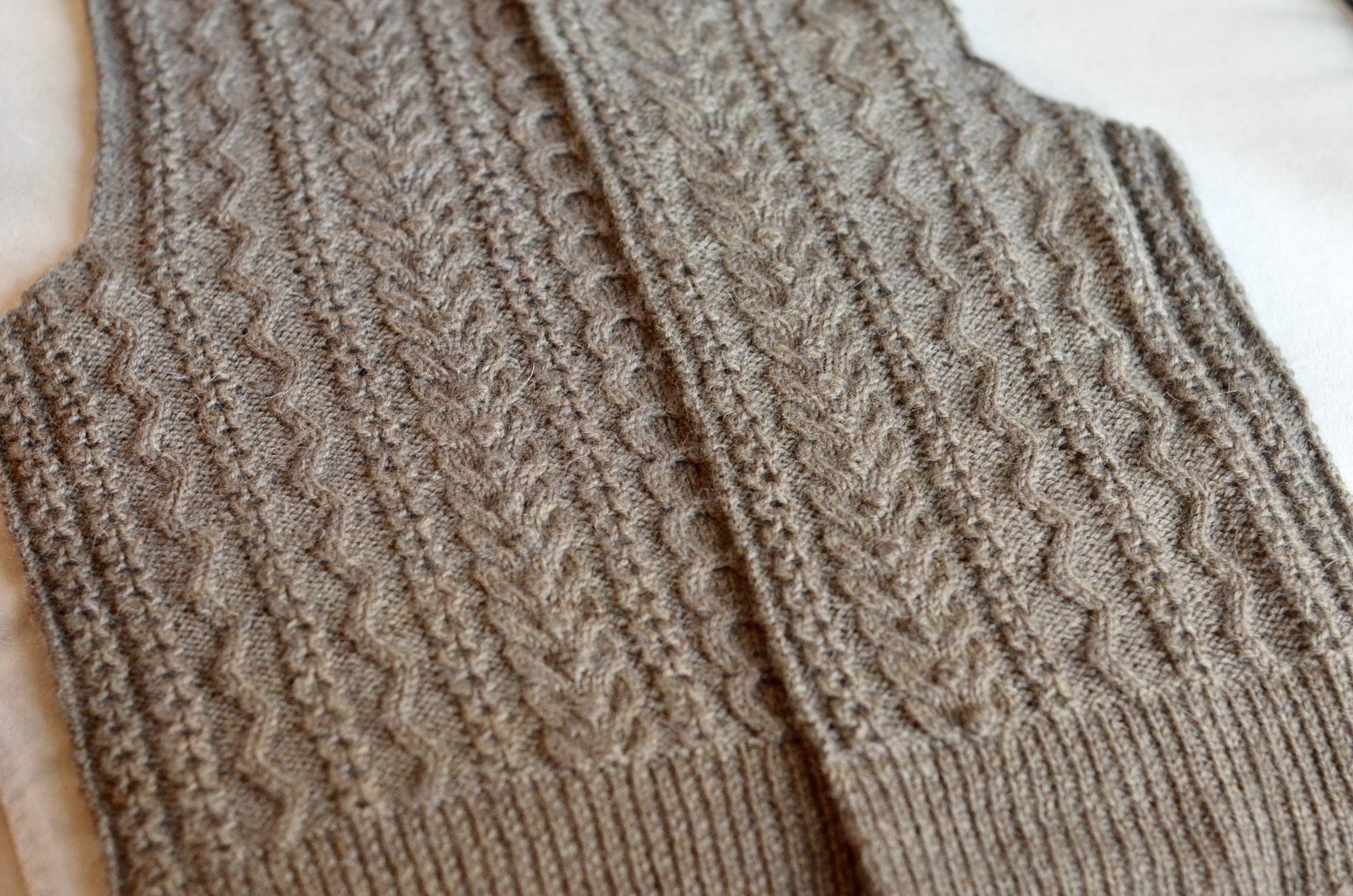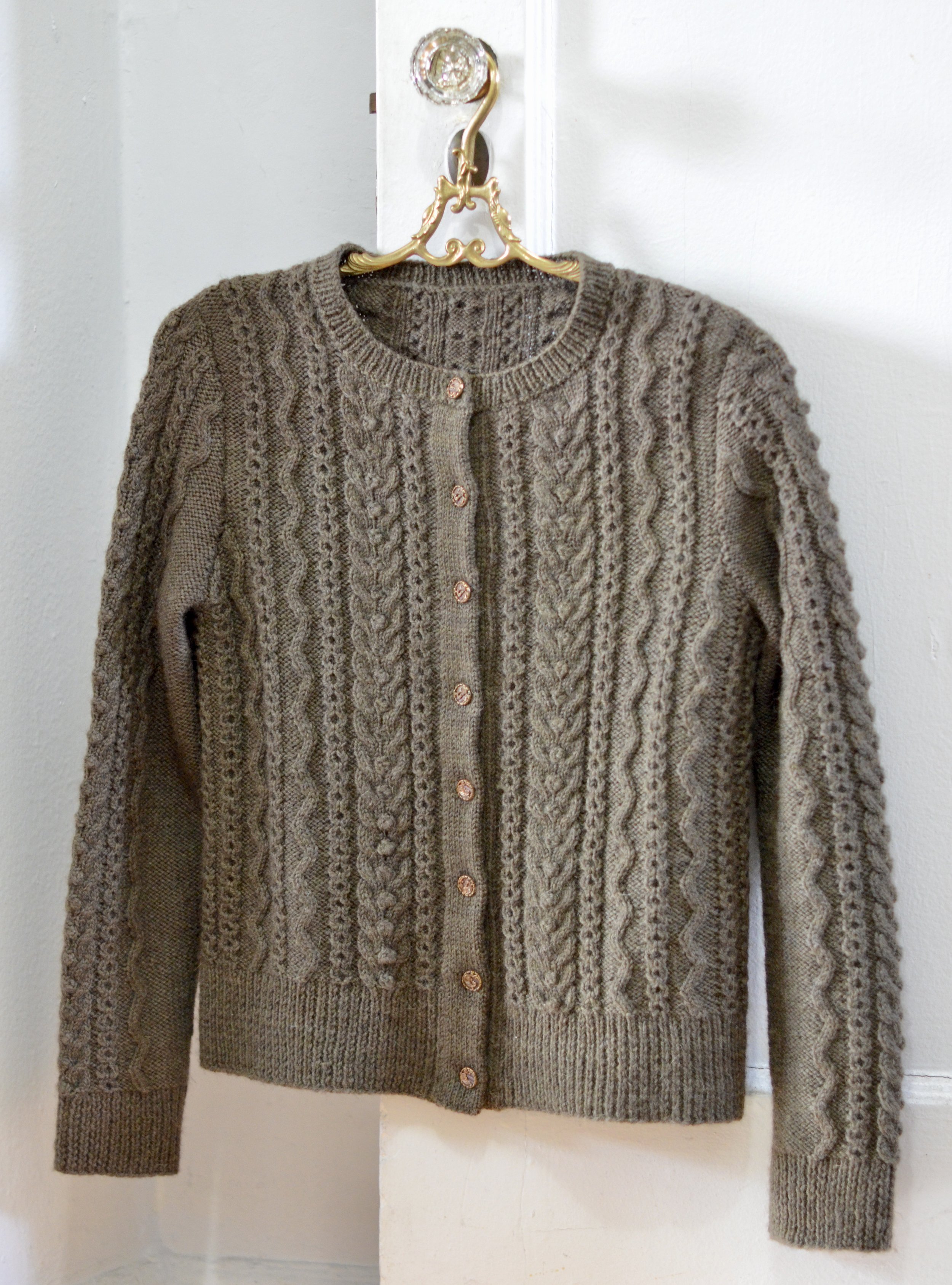WASHING AND BLOCKING YOUR KNITS
Over the years I’ve found my preferred ways to wash and block my knits. For me, this is the part of the process where a knit becomes its true and final self.
I’ve mentioned these points in other posts but it’s best to begin at the beginning.
What is blocking and why do we do it?
• Gauge isn’t truly accurate until you wash and dry your swatch in the same way that you intend to wash and dry your sweater. Most fibers are hand washed cold in a rinseless wool wash or mild soap (like Eucalan or Soak or a mild dish liquid) then allowed to air dry flat. I personally like to use Dr. Bronner’s soap for my first wash on most of my knits (this really gets out dirt and spinning oil, especially in tandem with slightly warm water) and the I use Eucalan for cleaning the piece thereafter.
• Yarns can shrink or expand when washed and it’s best to know what a given yarn will do before you make a whole sweater out of it.
• All hand knitting fibers have been processed, dyed and handled. They are coated with oils to aid the spinning process and sometimes other finishing agents are used. You won’t know how truly beautiful your yarn is or how it will really behave until these agents have been removed.
• Blocking is the process of setting the stitches once they have been knit. Wet blocking smooths and relaxes the fibers and pinning them into the dimensions called for in the pattern insures both that you get the size you want and that the garment will hold its shape. You are training the yarn to be a sweater that will fit you.
• Directions for wet blocking a garment or swatch. Fill a basin with cool water and a small amount of rinseless wool wash or delicate dish soap. Immerse the knitting and allow to soak for at least 20 minutes. Remove the knitting, refill the basin with fresh water and rinse. Squeeze as much excess water from the piece(s) as possible then wrap in a towel and press on it firmly to remove remaining water.
Wet-blocking your knits
• For a swatch, smooth the fabric on a blocking board or towel and pin with t-pins or blocking wires and pins. Allow to air dry completely.
• For a sweater you will reshape pieces on a blocking board or towel and pin to schematic dimensions using T-pins, or blocking wires and pins. Allow to air dry completely.
